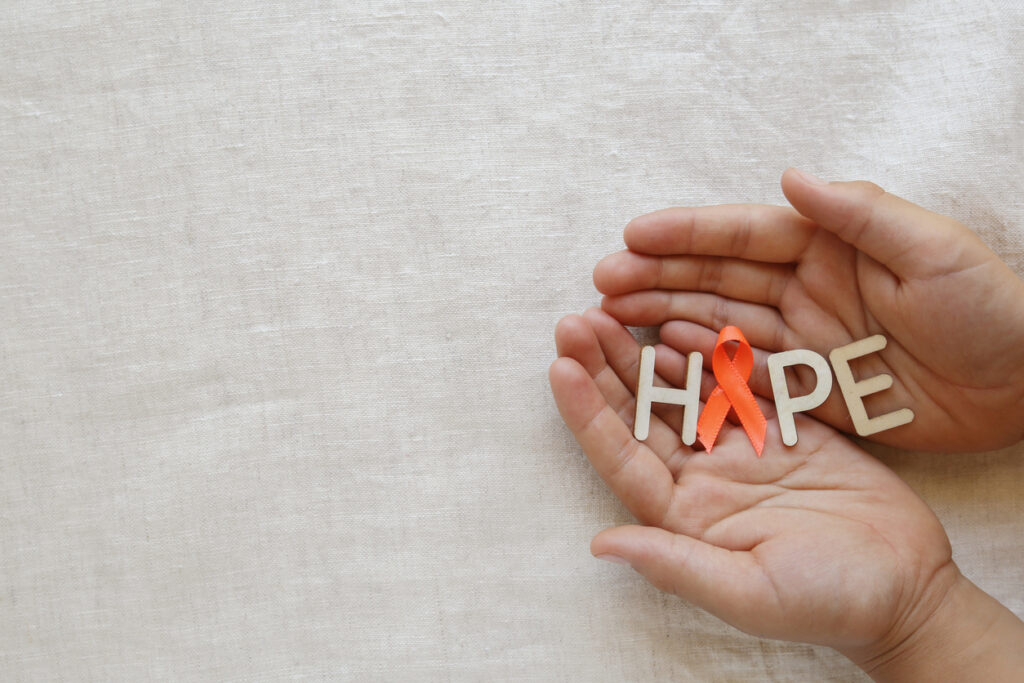Each year during the month of March, advocates join to raise awareness about the phenomenon of non-suicidal self-injury (NSSI). Physicians and mental health professionals may refer to NSSI as self-injury (SI), self-harm (SH), deliberate self-harm (DSH), and self-mutilation (SM). Informally, NSSI is known as cutting.
The purpose of this article is to participate in this movement, along with awareness advocacy groups like LifeSigns Self-Injury Guidance and Support Network. While NSSI Awareness Month includes all people who self-injure, we’ll focus on adolescents. We’ll share facts and statistics about adolescent NSSI, helpful tips for parents of teens who self-injure, and information about when and how to seek treatment for adolescents who self-injure.
In this article, we’ll define NSSI, offer statistics on its prevalence in the adolescent population, then talk about risk factors and why people engage in NSSI. We’ll end by discussing evidence-based therapies for adolescent NSSI and offering resources for adolescents and families of adolescents who self-injure.
What is NSSI?
Here’s a short definition of NSSI, provided by the National Alliance on Mental Illness (NAMI):
Self-harm or self-injury means hurting yourself on purpose.
Here’s a more complete, clinical definition, provided by the American Psychological Association (APA):
“The condition – clinically known as non-suicidal self-injury or NSSI — is characterized by deliberate self-inflicted harm that isn’t intended to be suicidal. People who self-harm may carve or cut their skin, burn themselves, bang or punch objects or themselves, embed objects under their skin, or engage in myriad other behaviors that are intended to cause themselves pain but not end their lives.”
There’s a distinction to make here, however, between self-harm and self-injury. Self-harm is a broad category that includes behaviors such as risk-taking, food-related disorders, and alcohol/substance use disorders. NSSI is one type of self-harming behavior among these, although professionals and laypeople alike often use the terms self-harm and self-injury interchangeably when talking about NSSI.
How Common is NSSI Among Adolescents?
The American Journal of Public Health published a report in 2018 that contained alarming statistics about the prevalence of NSSI in adolescents. In a sample set of more than sixty-thousand teenagers, researchers found:
- 17% of adolescents said they’d engaged in NSSI
- Roughly 11% of males said they’d engaged in NSSI
- Around 24% of females said they’d engaged in NSSI
A study that large allows us to generalize to the population-level. After doing some basic calculations, this report implies that, between 2001-2015, over seven million adolescents each year engaged NSSI. That’s about two million boys and seven million girls.
That’s likely far more than anyone reading this realized, which means that we need articles like this to raise awareness about this phenomenon. The prevalence of NSSI should alarm parents of teens, but should also teach them three things:
- NSSI in adolescents happens more than most people realize.
- More than twice as many girls report NSSI than boys.
- If your teen engages in NSSI, they’re not alone – and neither are you.
That last point is particularly relevant. NSSI prevalence, and its rapid increase between 2001-2015, means it’s been studied by concerned scientists and clinicians. They’ve identified common risk factors for NSSI as well as evidence-based treatments, such as Dialectical Behavior Therapy (DBT), that can reduce symptoms and instances of NSSI. That’s a big deal – we’ll circle back to DBT later. There’s one more thing to point out about the prevalence statistics: the fact that NSSI occurs so frequently means there’s an abundance of online resources for teens who self-injure. We’ll circle back to those later, too: for now, understand that those resources help not only the teens who self-injure, but their families, friends, and teachers, as well.
Why Do Teens Engage in NSSI?
That’s the first thing parents want to know when they find out their teen engages in NSSI. It’s also the first thing anyone who hears about NSSI, but has no direct experience with NSSI, wants to know. At first, it’s confusing, perplexing, and disturbing – especially for parents, friends, or anyone close to a teen who engages in NSSI.
However, after learning why people engage in this behavior, it’s not difficult to understand from an objective, intellectual perspective. That level of understanding does not make it any more easy to handle emotionally – but what observers need to realize is that the emotional discomfort they may feel upon conceptualizing NSSI is likely minor compared to the intense emotional discomfort that leads people to engage in NSSI.
With all that said, we’ll lean on information from Lifesigns – the support and resource organization mentioned above – to explain why people self-injure. While the following two definitions are taken directly from the Lifesigns website, motivated researchers can read peer-reviewed journal articles upon which this information is based here and here.
First, a concise explanation:
“Self-injury is a coping mechanism. An individual harms their physical self to deal with emotional pain, or to break feeling of numbness by arousing sensation.”
Next, an expanded explanation:
“Self-injury is any deliberate, non-suicidal behavior that inflicts physical harm on our body and is aimed at relieving emotional distress. Physical pain is often easier to deal with than emotional pain, because it causes real feelings. Injuries can prove to a person that their emotional pain is real and valid. Self-injurious behavior may calm or awaken a person. Yet self-injury only provides temporary relief. It does not deal with the underlying issues. Self-injury can become a response to the stresses of day-to-day life and can escalate in frequency and severity.”
We typically summarize scientific literature about these topics ourselves. In this instance, we let the advocates at Lifesigns do the summarizing because they have daily contact with people who engage in NSSI – most of whom are adolescents.
They also get straight to the point, in their concise definition: NSSI is a coping mechanism people develop to help them cope with painful emotions.
Who Is at Risk of Engaging in NSSI?
The study “Non-Suicidal Self-Injury in Adolescence,” linked to above, identifies the following groups as at-risk for engaging in NSSI:
- Adolescents
- Females
- Adolescents with peer contact with NSSI
- Adolescents with social media contact with NSSI
- People with a history of adverse childhood experiences (ACEs)
In addition, the APA indicates the following issues, events, and/or demographic characteristics are associated with increased risk of NSSI:
- Diagnosis of emotional, behavioral, or psychiatric disorders.
- History of self-harm
- History suicide attempts
- Previous thoughts of suicide
- Childhood trauma
- Family history of psychiatric disorders, self-harm, or suicidal behavior
- Family history of suicide
- Experiencing traditional or cyberbullying
- Identification as non-binary, questioning, and/or LGBTQI
Let’s make this clear: teenagers are at high risk of engaging in NSSI, and bisexual teenage girls have the highest risk of all demographic groups. Research shows that close to 47 percent of bisexual females report engaging in NSSI.
That means if you’re the parent of a teen, you should be aware of the phenomenon of NSSI. And if you’re the parent of a bisexual female, you need to pay close attention, and watch for these eight warning signs:
- Long sleeves or pants during warm weather
- Cuts, scratches, bruises, or burns anywhere on the body
- Peers who engage in NSSI
- Missing patches of hair, including eyelashes or eyebrows
- Sharp objects hidden in the bedroom, backpack, clothes, or car
- Isolating in the bedroom with the door locked, especially after a stressful event
- Wounds or scars noticed by a teacher, coach, or family doctor
- Sharp objects in your teen’s room with blood on them
If you see any of these signs or hear your teen or their friends talk about self-harm or self-injury, do not dismiss or ignore any of it:
Seek the help of a mental health professional immediately.
This goes for teens with friends who talk about NSSI or engage in NSSI, too. Don’t let it slide because it’s serious. If peers joke about NSSI, don’t laugh along with them, because it’s not funny. It’s serious, and should be taken seriously – by parents and peers – even when you’re certain the child or peer doing the talking or joking is exaggerating or being dramatic.
The slightest chance you could be wrong is not worth the risk. If you’re a teen who self-harms, please talk to a friend, a teacher, or a school therapist about what’s going on. If you don’t have anyone to talk to, scroll down to the list of resources below, and call, chat, or text someone. And this is worth repeating: if you’re a parent and you see the signs, get professional help right away.
Treatment for NSSI
Research shows that three modes of therapy are effective for adolescents who engage in NSSI: cognitive behavioral therapy (CBT), dialectical behavior therapy (DBT), and mentalization-based treatment for adolescents (MBT-A).
However, a study published early this year, “Efficacy of Dialectical Behavior Therapy Versus Treatment as Usual for Acute-Care Inpatient Adolescents,” presents evidence that dialectical behavior therapy (DBT) is the most effective approach of the three.
Researchers analyzed data on over four hundred adolescents hospitalized for suicidal ideation, suicide attempts, or non-suicidal self-injury who received either DBT or treatment as usual (TAU). Compared to patients who received TAU, patients who received DBT showed decreases in:
- Time in hospital
- Hospital time in restraints
- Suicide attempts
- Self-injury incidents
- Hours of constant observation for self-injury
This research makes a strong case for the use of DBT as a treatment for adolescents who engage in NSSI: reduced time in hospital, reduced incidents of self-injury, and reduced suicide attempts – although to be clear, NSSI is related to, but is not the same thing as a suicide attempt – are all treatment goals for adolescents who engage in self-harming behaviors.
Help for Teens Who Self-Harm
Some adolescents have mental health disorders that lead them to engage in NSSI. Behavioral, mood, and/or emotional disorders such as depression, anxiety, post-traumatic stress disorder, alcohol/substance use disorder, bipolar disorder, or defiance disorders can all contribute to or exacerbate self-harming behaviors. Adolescents diagnosed with any of these mental health disorders need the help of qualified professionals. Evidence shows that with evidence-based treatment, like CBT, MBA-T, or DBT, teens who self-harm can learn to manage their emotions without harming themselves. When teens receive the right treatment, their lives can improve dramatically. In this case, data shows the right treatment for teens who engage in NSSI is DBT.
It takes work and professional help, but the evidence shows that treatment works.
Self-Injury: Resources for Parents and Teens
Here’s a list of resources anyone – parent, teen, friend, other relative or concerned party – can use right now to start the healing process:
- Parents can find a qualified professional in your area with this psychiatrist finder provided by the American Academy of Child and Adolescent Psychiatry.
- Teens who need help can call or text the following numbers:
- The National Suicide Prevention Lifeline (24/7/365): 1-800-273-8255
- The Trevor Project Phone (24/7/365): 1-866-488-7386
- Trevor Project Text (7 days/wk, 6am-am ET, 3am-10pm PT): Text START to 678678
- The Trevor Project Chat: CLICK HERE
- The Crisis Text Line (24/7/365): Text CONNECT to 741741
- The Youth Yellow Pages TEEN LINE (6pm-10pm PT) 310-855-4673
- The Youth Yellow Pages TEXT: Text TEEN to 839863































































